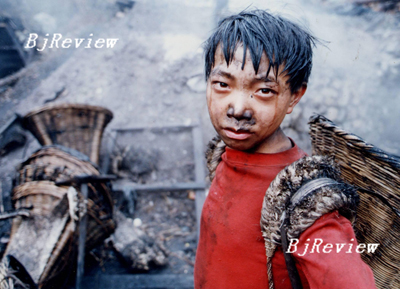
Flashback
May 9 Henan TV's Metro Channel reporter Fu Zhenzhong was tipped off and traveled to Shanxi to investigate the scandal at the scene
May 19 The TV station ran the news, depicting the pain of the children's parents looking for their missing children and the hellish living conditions of the laborers in the illegal kilns. Many parents turned to the TV station for help
June 5 An online post on Henan's portal about finding the lost children caused a surge of interest from netizens
June 7 The local newspaper Shanxi Evening News ran an exclusive story exposing the miserable life of kiln laborers. Afterward the media began to focus on the forced labor case
June 11 The illegal brick kiln scandal hit the headlines and appeared on the front page of various web portals
June 13 The forced labor scandal attracted attention from the country's top leaders and Zhang Mingqi, a senior official of the All-China Federation of Trade Unions went to the field to oversee the case
June 15 The Shanxi Provincial Government launched a comprehensive raid to rescue the enslaved laborers and arrest the illegal kiln bosses. The Ministry of Public Security gave an order to arrest Heng Tinghan, foreman of the brick kiln in Caosheng Village
June 16 Heng Tinghan was captured in Hubei
June 19 Two inspectors from the Supreme People's Procuratorate traveled to Hongtong County to investigate possible dereliction of duty by local officials behind the scandal
June 20 Chinese Premier Wen Jiabao chaired a meeting to hear the primary investigation report and Shanxi Governor Yu Youjun made a self-critical speech at the meeting
June 22 A news conference was held to brief journalists on progress in the case, at which Vice Minister of Labor and Social Security Sun Baoshu said a total of 359 people, including 12 children, had been rescued from the illegal brick kilns. Of them, 174, including three children, were lured to the kilns and 185 were forced laborers. Police also found that 65 of the forced workers rescued were mentally retarded.
June 23 Wang Dongji, who was Party head of Caosheng Village where the kiln was located, was expelled from the Party and removed from the post
June 26 Ke Changfu, who was said to have been rude to workers and often beat them, was arrested at a remote construction site in the mountains near Dingjiaying Town in Shiyan City, Hubei Province
The Government Reaction
The State Council: The case needs to be fully investigated and dealt with. The rights of the minors should be protected and social justice should be done by rescuing the victims and punishing the lawbreakers
Ministry of Labor and Social Security: The scandal has revealed the poor governance in illegal labor use and production. Some cadres and law enforcement officers even have been involved in the unlawful kiln brick production for self-interest
All-China Federation of Trade Unions: The federation is shocked and outraged to hear the labor abuse scandal in Caosheng Village in Hongtong County of Shanxi Province. We should never allow such a tragedy to happen in our socialist country
Ministry of Public Security: More efforts will be made to crack down on illegal labor agencies and foremen to curb the use of forced labor
Shanxi Province: The incident has highlighted loopholes in the management of labor use in rural areas and among the floating population. We will never show tolerance to the Party cadres and civil servants who are guilty of dereliction of duty on this issue
Public Security Bureau of Shanxi Province: The police have been cracking down on illegal labor use in brick kilns since the 1990s. It's difficult to clean this up thus such scandals have reoccurred
The child slave labor scandal in China's Shanxi Province uncovered a depressing cost of China's rapid development. While for some development has brought riches, for others it has brought misery and some of the unlucky ones are children.
However, something good has come out of Shanxi. It has brought public and government attention to the issue and prompted action that could help to eradicate child labor from China in the long run.
Following self-criticism by Shanxi Governor Yu Youjun in regard to the child slavery scandal, China's State Council has decided to launch a nationwide campaign in July and August to crack down on illegal labor use.
The brick kiln incident proved a blow to China, which has been striving to build a stronger legal system and protect workers' rights.
According to news spokesman Li Yingming, in Hongtong County where the scandal broke out, telephone calls flooded in every day, some from parents looking for their children and others accusing local officials of being inhumane. "For a time the chief leaders of the county didn't dare to pick up the phone," Li said.
Young misery
By June 22 the scandal involved altogether 12 child laborers, according to statistics from the Shanxi authorities. But according to the media, these might be just the tip of an iceberg, for more under-aged laborers could have been transferred somewhere else before the scandal was exposed.
"We've carefully verified the 12 child laborers," said Zhang Mingqi, a senior official of the All-China Federation of Trade Unions, who led an investigation team dispatched to inspect the brick kiln case.
"We are still looking into the issue of using child labor, and we've found other young laborers, some of whom are minors," said Zhang. The minimum working age in China is 16. There are also restrictions on employing minors aged between 16 and 18, but they are not considered child laborers.
"I've visited some 1,000 kilns in Shanxi and the situation there was too miserable to watch," said Fu Zhenzhong, a reporter with Henan TV, a television station based in neighboring Henan Province, and the key person in disclosing the kiln scandal.
| 